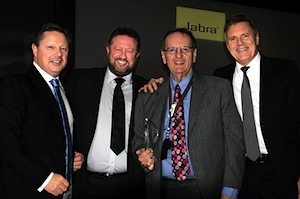The pace of digital disruption has left 50 per cent of British businesses and public sector organisations surveyed fearful or worried that their organisations will not be able to keep up with what is still to come over the next five years, according to YouGov research for Vodafone UK.
This potentially means that millions of businesses are in danger of being left behind. However, with nine out of 10 business leaders believing digital technology is essential to a business's success, it is imperative that UK plc and the public sector is sufficiently prepared to take advantage of the opportunities presented by digital technology, now and in the future.
The research, which surveyed more than 1,100 decision makers across private businesses and the public sector in Britain, also uncovered the 'universal truths' of doing business.
These are the factors which senior decision makers believe have always been and continue to be true , and almost eight out of 10 businesses (78 per cent) confirm these fundamentals will still apply in 10 to 20 years.
The top five business truths, all of which can be positively impacted by the effective use of digital technology, were delivering quality customer service (74 per cent); providing quality products and services (72 per cent; providing value for money (65 per cent); controlling costs (65 per cent); and delivering profitability/ return for investors (53 per cent).
However, while a majority saw quality customer service as a universal business truth, it is clear that achieving this has become more difficult in today's digital economy with an overwhelming consensus that digital technology has changed customers' expectations.
Today's customer expects an almost immediate response to their enquiries (73 per cent); to be able to reach a company through a variety of different channels (such as telephone, retail store, email, web chat, social media, online forums, face-to-face etc); to purchase a product/ service (70 per cent) or ask for help (67 per cent); and to receive a consistent experience online or offline (53 per cent).
This will continue to be a challenge for businesses over the next five years with nearly 40 per cent of respondents anticipating that customers' growing expectations (such as around quality of service and responsiveness) will disrupt the organisation and how business is done.
"Digital technology has already broken down the old, familiar business models but the effect it will have on the future of organisations' operations remains significant. Britain's business leaders are rightly concerned about keeping up," said Phil Mottram, Enterprise Director of Vodafone UK.
"British businesses and the public sector are under constant pressure to meet customers' ever increasing expectations, to do more with less and still find ways to be competitive.
"While the onset of digital technology seems to have exacerbated this scenario for many, by placing pressure on IT departments, budgets and resources, it can also be the means to overcome the challenges businesses face today and tomorrow.
"When used to its full potential, digital technology can generate cost savings, improve operational agility, enable workplace flexibility and support the delivery of higher standards of customer service to meet the growing demands of consumers and the public.
"By seeing digital technology as an enabler of positive change rather than as something to fear, organisations will be better positioned to overcome some of their key challenges and continue to deliver on the universal truths that are seen to be fundamental to business success."

 Hats off to Nimans for collecting the Distributor of the Year award from headset manufacturer Jabra.
Hats off to Nimans for collecting the Distributor of the Year award from headset manufacturer Jabra.